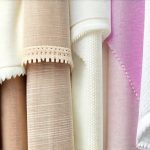Low-Friction Innerwear to Minimize External Irritation
Our clothing is often seen as simply functional – protection from the elements, adherence to social norms, or even self-expression. But for many individuals, particularly those with sensitive skin conditions, allergies, or chronic pain, innerwear can be a significant source of discomfort and irritation. The fabrics we choose against our largest organ (the skin) directly impact its health and wellbeing. Traditional materials like wool or coarse synthetics can create friction, trapping heat and moisture, which exacerbates existing sensitivities. This isn’t merely about comfort; it’s about quality of life. Finding innerwear designed with low-friction properties is a proactive step towards minimizing external stressors on the skin, reducing flare-ups, and promoting overall wellbeing.
The concept of “low-friction” in clothing extends beyond simply avoiding rough textures. It encompasses fiber selection, weave construction, and even garment design. Consider that friction isn’t just about the surface feel; it’s also about how a fabric moves with your body. A seemingly smooth fabric can still cause irritation if it doesn’t allow for adequate airflow or moisture wicking. The goal is to create a microclimate against the skin that is both comfortable and supportive, without contributing to chafing, rubbing, or overheating. This article will explore materials, design features, and practical considerations for choosing innerwear that minimizes external irritation and supports healthier skin.
Understanding Friction & Skin Sensitivity
Friction arises from the contact between two surfaces moving against each other. When it comes to clothing and skin, this movement—caused by everyday activities like walking, bending, or even just sitting—can lead to micro-abrasions on the skin’s surface. These abrasions, though often invisible, disrupt the skin barrier, making it more vulnerable to irritants and inflammation. Individuals with conditions such as eczema, psoriasis, dermatitis, or fibromyalgia are particularly susceptible to these effects, experiencing heightened sensitivity and discomfort. Even those without diagnosed conditions can find that certain fabrics exacerbate dryness, itching, or redness. The key is recognizing that friction isn’t just about texture; it’s about the interaction between fabric and skin. Understanding how materials impact your body is crucial, and you might also consider exploring ways to support kidney drainage without irritation.
Beyond fiber type, weave construction plays a crucial role in minimizing friction. Tightly woven fabrics generally create more friction than loosely woven ones because they have less ‘give’. This explains why stiff denim or tightly knit wool can be problematic for sensitive skin. Look for fabrics described as “knit” rather than “woven,” and pay attention to the density of the weave. Moisture management is also essential; damp skin increases friction significantly. Fabrics that wick away moisture – pulling it from the skin’s surface – reduce this effect, creating a more comfortable experience.
Finally, garment design itself impacts friction points. Seams, labels, and tight-fitting garments can all contribute to irritation. Flatlock seams (where the edges of fabric are sewn flat against each other), tagless designs, and looser fits minimize these potential problem areas. Choosing innerwear designed with these features in mind is a proactive step toward reducing skin irritation.
Material Choices for Low Friction
The foundation of low-friction innerwear starts with material selection. While there’s no single “best” fabric, several options consistently outperform others in terms of minimizing irritation.
- Microfiber blends: These synthetic fabrics are incredibly soft and smooth, offering excellent moisture wicking capabilities. Look for high-quality microfiber that is specifically designed for sensitive skin – avoiding cheaper versions which can sometimes feel ‘sticky’.
- Silk: A natural fiber renowned for its luxurious smoothness and breathability. Silk allows the skin to breathe, reducing heat buildup and minimizing friction. However, it requires delicate care and may not be suitable for all budgets or lifestyles.
- Bamboo rayon: This plant-based fiber is incredibly soft, breathable, and naturally antibacterial. Bamboo wicks away moisture effectively, making it a good choice for those prone to sweating or experiencing skin sensitivities. It’s also more sustainable than many synthetic options.
- Modal: A type of rayon derived from beech trees, Modal offers exceptional softness and drape. It’s highly absorbent and resistant to shrinking, maintaining its smooth texture even after multiple washes.
Avoid materials known for their potential irritancy, such as:
- Wool (can be itchy and abrasive)
- Harsh synthetics like nylon or polyester without a soft finish
- Rough weaves or textures
When considering fabric choices, it’s helpful to remember that even dietary adjustments can impact skin health; exploring low-sodium meal planning might reduce urinary irritation and overall sensitivity.
The Role of Seamless Construction
Seamless innerwear represents a significant advancement in minimizing irritation. Traditional garments are constructed with multiple seams, which can create pressure points and friction against the skin, especially for individuals with sensitive conditions. Seamless construction eliminates these potential sources of discomfort by using tubular knit fabrics that are cut and shaped to fit the body without requiring stitching in areas prone to rubbing or chafing.
The benefits extend beyond simply eliminating seams. Seamless garments tend to have a more comfortable and natural feel against the skin, allowing for greater freedom of movement. They also reduce the risk of pressure sores or skin breakdown, particularly important for individuals with limited mobility or chronic illnesses. When choosing seamless innerwear, pay attention to:
- The quality of the knit: A dense, smooth knit will provide better support and minimize friction.
- The fit: Ensure the garment fits snugly but not too tightly – a loose fit can also create friction as fabric rubs against skin.
- The overall design: Look for designs that prioritize comfort and functionality, such as tagless labels and minimal embellishments.
For those seeking further support, lifestyle tips to prevent bladder irritation naturally can complement the benefits of low-friction innerwear.
Moisture Management & Breathability
As previously mentioned, moisture is a major contributor to friction and irritation. When sweat or humidity builds up against the skin, it creates a sticky environment that increases chafing and can exacerbate existing sensitivities. Choosing innerwear with excellent moisture-wicking properties is therefore critical for maintaining skin health. Fabrics like microfiber, bamboo rayon, and Modal excel at drawing moisture away from the skin, allowing it to evaporate quickly.
Breathability complements moisture management by promoting airflow and preventing heat buildup. Trapped heat can lead to sweating and further irritation. Natural fibers like silk and breathable synthetics allow air to circulate freely, keeping the skin cool and dry. Prioritizing both breathability and wicking capabilities ensures a comfortable microclimate against the skin.
Consider these additional tips:
- Avoid fabrics that trap moisture, such as vinyl or rubberized materials.
- Look for garments with ventilation features, such as mesh panels in key areas.
- Change innerwear frequently, especially after exercise or periods of increased sweating.
- Use fragrance-free laundry detergents and avoid fabric softeners, which can leave residue on clothing that irritates the skin.
Taking a holistic approach to wellbeing includes considering how meal timing habits might also minimize potential sensitivities.
Ultimately, choosing innerwear is about finding what works best for your individual needs and sensitivities. By prioritizing low-friction materials, seamless construction, moisture management, and breathability, you can create a more comfortable and supportive experience for your skin – and improve your overall quality of life. Remember to also consider how gentle home remedies might ease light urinary irritation if needed.





















